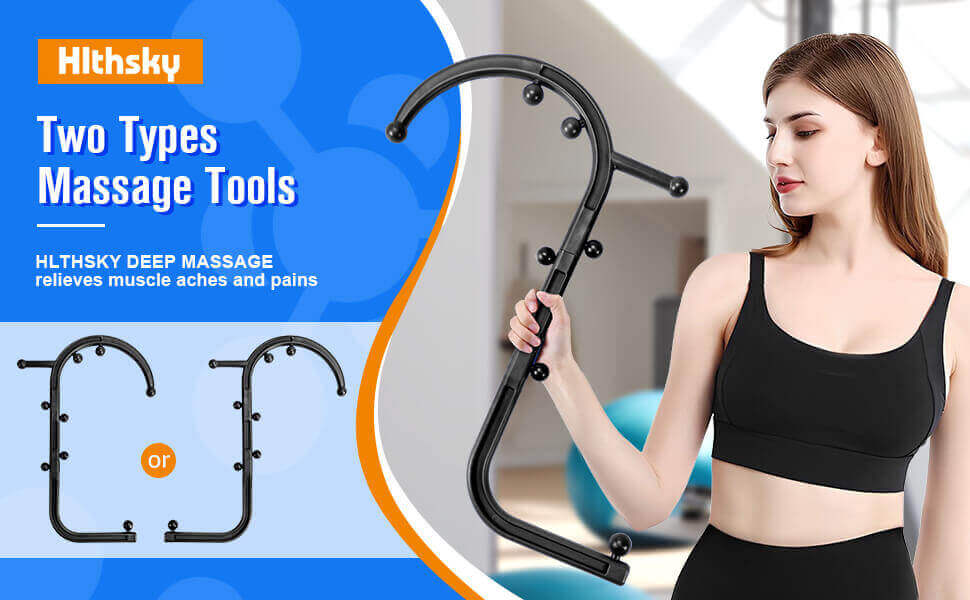
What Is Trigger Point Therapy?
Share
A Guide to Relieving Muscle Knots and Restoring Body Balance
If you’ve ever felt a stubborn knot in your back or a dull ache in your shoulders that just won’t go away, chances are you’ve encountered a trigger point. These small but mighty trouble spots in your muscles can cause not only localized pain, but also referred discomfort in surrounding areas.
Trigger point therapy is a proven technique designed to relieve tension, promote healing, and restore the body’s natural range of motion—all without the need for complicated procedures or expensive treatments. Whether you're an athlete, a desk worker, or simply dealing with daily muscle tightness, understanding trigger point therapy can be a game changer for your health and well-being.
What Are Trigger Points?
Trigger points are tight, sensitive areas located within bands of muscle fibers. These spots may feel like hard lumps or small knots under the skin. When pressure is applied, they often produce pain that may be felt both at the point itself and in nearby areas—a phenomenon known as referred pain.
Common causes of trigger points include:
- Poor posture or prolonged sitting
- Overuse of certain muscles
- Physical injury or trauma
- Chronic stress or tension
- Muscle imbalances
For example, a trigger point in the upper back might lead to headaches or neck pain, even if the tension originates much lower in the muscle chain.
How Does Trigger Point Therapy Work?
Trigger point therapy focuses on applying targeted pressure to these tense muscle spots to help release tension and restore healthy function. This can be done manually or with the help of self-massage tools. The goal is to increase blood flow, release tight fascia, and reduce pain.
Common Techniques:
- Manual pressure: A therapist may use fingers, thumbs, or elbows to press into trigger points.
- Self-myofascial release (SMR): Individuals can apply pressure using massage balls, foam rollers, or handheld tools.
- Percussive therapy: Massage guns and vibration tools may also assist in loosening muscle fibers.
By consistently releasing trigger points, you can support muscle recovery, posture correction, and better movement patterns.
Benefits of Trigger Point Therapy
Adding trigger point therapy into your self-care or fitness routine offers numerous benefits:
- Pain relief: Reduces chronic and acute muscle soreness
- Increased flexibility: Frees up restricted movement caused by tight muscles
- Better posture: Relieves the underlying tension that pulls joints out of alignment
- Faster recovery: Speeds up muscle repair after workouts or physical activity
- Improved circulation: Enhances blood and oxygen flow to affected areas
Whether you're lifting weights or lifting a laptop, releasing tension at the source can significantly improve how your body feels and functions.
Getting Started: Tools That Help
You don’t need a professional massage every time you feel muscle tightness. With the right tools and know-how, self-care at home can be just as effective.
Look for:
- Ergonomic massage balls for targeted release
- Contoured foam rollers for larger muscle groups
- Adjustable massage sticks or handheld tools for on-the-go relief
These tools make it easy to incorporate trigger point therapy into your daily wellness routine, helping you feel better, move more freely, and recover faster.
Final Thoughts
Trigger point therapy is more than just working out knots—it’s a proactive approach to caring for your muscles, reducing tension, and preventing discomfort before it starts. Whether you're managing chronic tightness or recovering from a tough workout, learning how to release trigger points can make a significant difference in your quality of life.
Take control of your recovery. With the right technique and tools, you can restore balance to your body—one pressure point at a time.